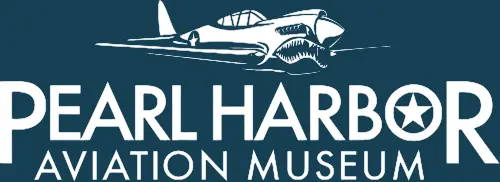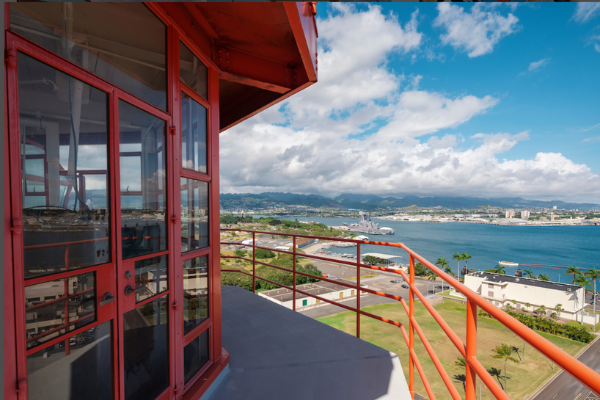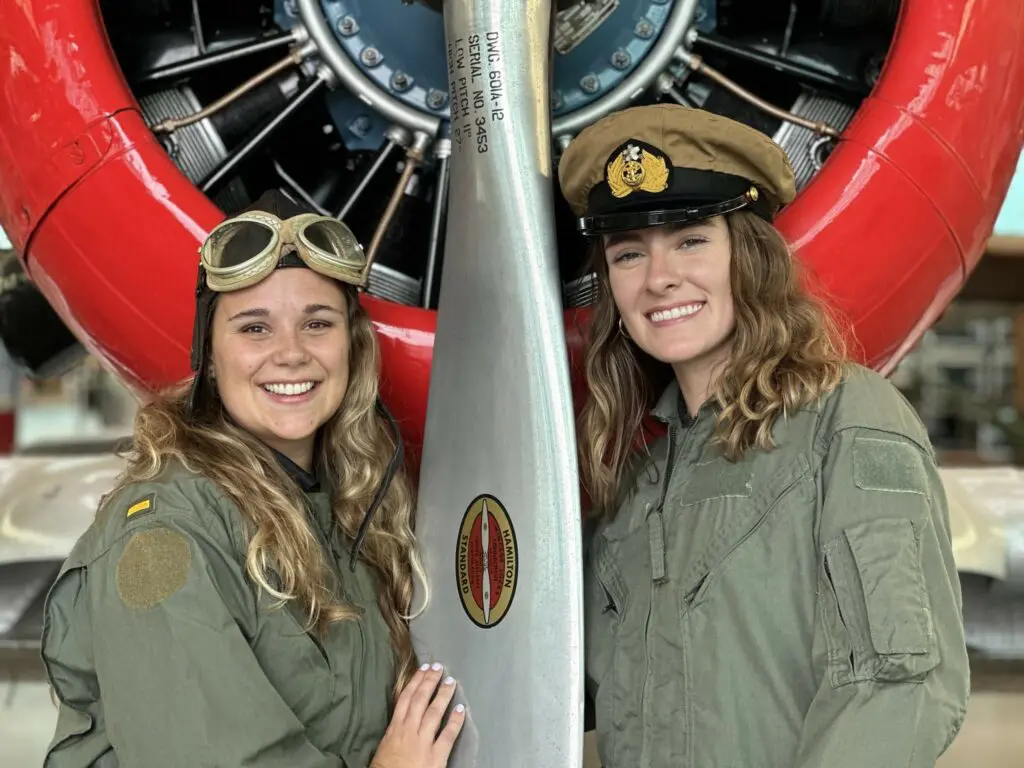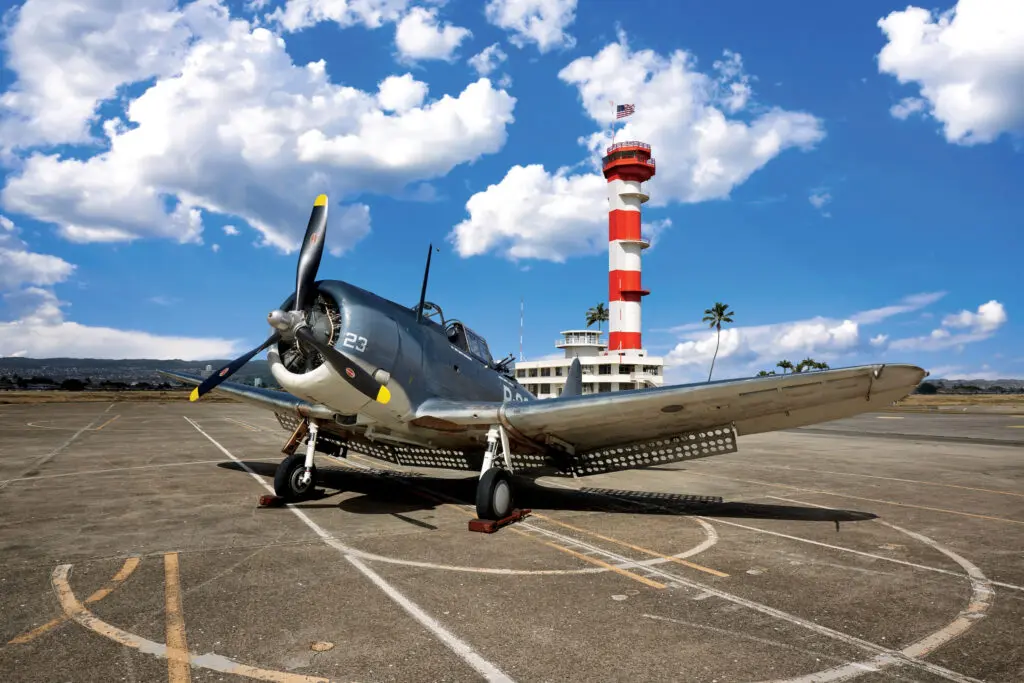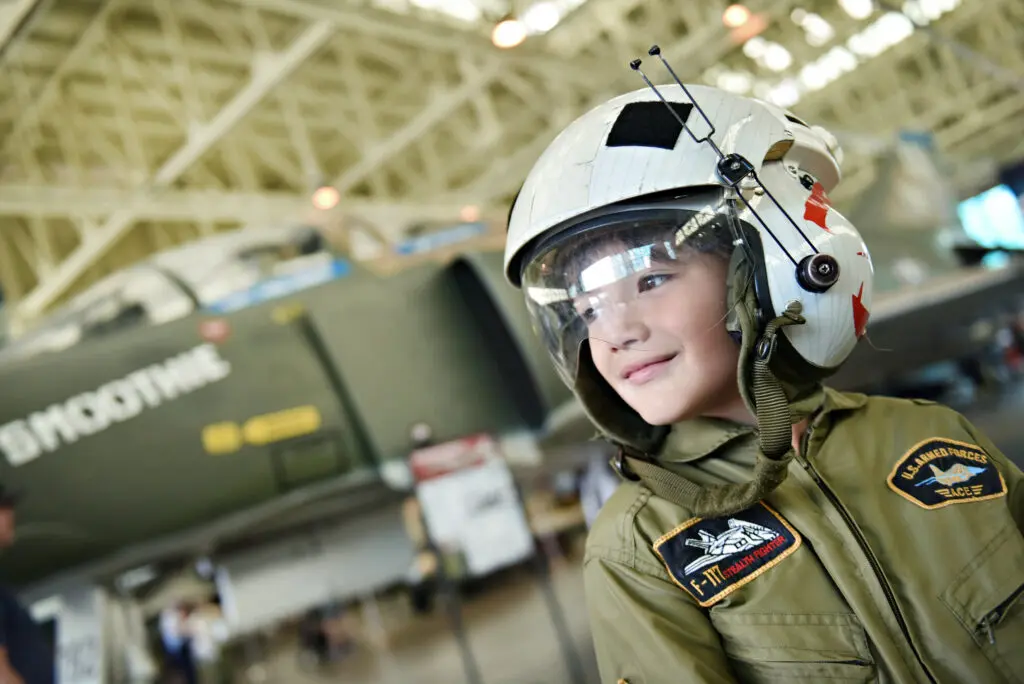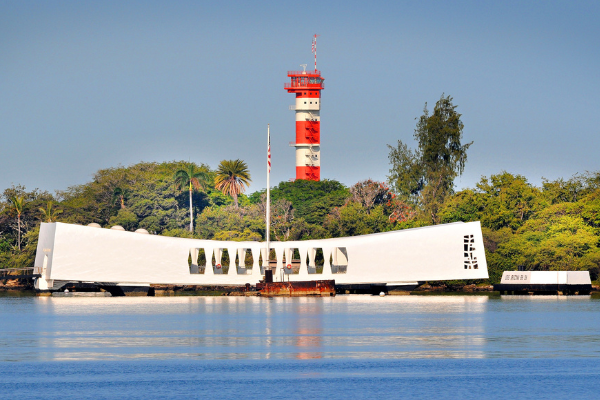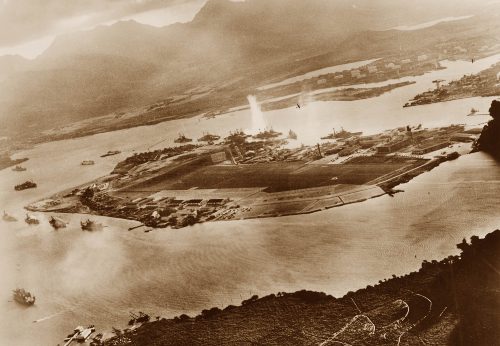Ready Room Blog
4/9/2012
How fast was the Zero?
When American pilots first encountered the Zero, they were stunned. The Zero had nearly complete initial dominance. This dominance is sometimes attributed to the A6M’s high speed.
Perspective
In reality, however, the Zero was rather modest in straight-line speed, with a maximum speed for the A6M2 Model 21 of about 317 mph to 332 mph at the critical altitude of about 16,000 feet. In addition, the Zero was not very good in dives and had severe maneuverability limitations at speeds above about 180 mph. The Zero’s great strengths were really its maneuverability at moderate speed, its incredible combat range, (arguably) its cannon armament, and, at the start of the war with the United States, its combat-experienced pilots.
Rated Speeds in General
For aircraft, the “top speed” is measured at the aircraft’s “critical altitude”—the altitude at which level speed is maximum at full military power. (Military power is the highest power an engine can produce on a sustained basis.) At lower altitudes, air denseness creates more air resistance, slowing the aircraft. At higher altitude, the thinner air keeps the aircraft engine from performing at full power. Sometimes, manufactures also provide a military power speed at Sea Level and occasionally at several altitudes.
Of course, if an attacker is higher than the target, the attacker can gain speed in a dive. In turn, if an attacker has to climb to reach its target, it will be flying slower. Nevertheless, an aircraft’s maximum speed at its critical altitude is the most common single metric for an aircraft’s “speed.”
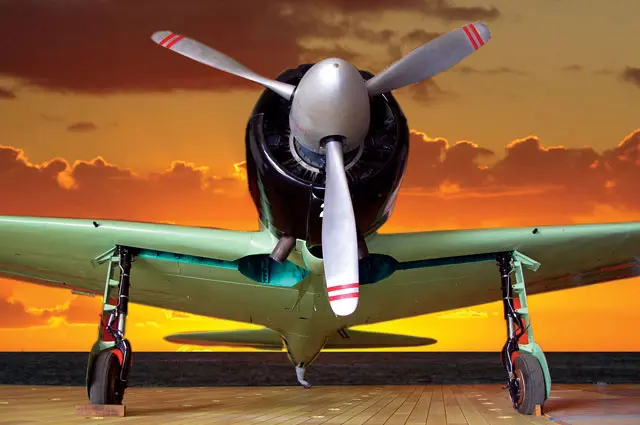
The Model 21 at Pearl Harbor and the Philippines
The Zero was officially the Type 0 Aircraft Carrier Fighter.[1] This base designation was followed by a model number. The first model was Model 11, meaning that it was the first major version of the fuselage and engine. It had fixed wing tips. After 66 aircraft were built, folding wing tips were added to permit more Zeros to fit on aircraft carriers.[2] This second model was the Model 21, to indicate a different fuselage. The Model 21 was used almost exclusively in the first year of the war.
The Imperial Japanese Navy (IJN) also had a short designation for its aircraft. The Zero was the A6M, meaning that it was a carrier fighter (A) designed by Mitsubishi (M). The six meant that it was the sixth carrier fighter from Mitsubishi. The prototype version was the A6M1. The first production models (the Models 11 and 21) were designated as A6M2s.
The Zero’s designer, Jiro Horikoshi, reported speeds for several versions of the Zero—but not for the A6M2 Model 21 or 22. For example, he noted that the prototype had a requirement to fly at 500 km/h (311 mph) at 4,000 meters.[3] He also noted that the A6M1 prototype, using the Mitsubishi Zuisei Type 13 of 850 hp, reached a maximum speed for 480 km/h. However, after atmospheric conditions were taken into account, it had a corrected speed of 508 km/h (316 mph).[4]
Hirokoshi then noted that the more powerful Sakae 12 was placed in the third test aircraft, which became the A6M2.[5] However, he did not mention the speed of this improved version. Presumably, it was faster, but by how much?
To figure that out, we need to do some calculations. Horikoshi did note that the later A6M5, which had a rated speed of 565 km/h (351 mph), was 20 km/h faster than the A6M3.[6] So the A6M3 would have a speed of 545 km/h or 339 mph. He also noted that the A6M3 was a disappointment, being only 10 km/h faster than the A6M2. This would mean that the A6M2’s speed was about 535 km/h or 332 mph.
Fortunately, these tortured calculations are not the only basis for judging the Model 21’s speed. In a 1941 contest, Japan flew the Zero against various other Japanese fighters. The Zero’s speed was recorded as 530 km/h (329 mph or 286 kts). It is not known how heavily the Zero was loaded for this contest.
Another flight test source is the U.S. Intelligence Service[7] report on a crashed and restored Model 21 in late 1942. This aircraft had been flown by Flight Petty Officer Tadayoshi Koga. Koga crashed in Alaska on June 4, 1942, although tests on the aircraft did not begin until late 1942.
Flight tests on Koga’s Zero gave the results shown in Figure 3. The maximum speed was 326 mph at 16,000 feet.
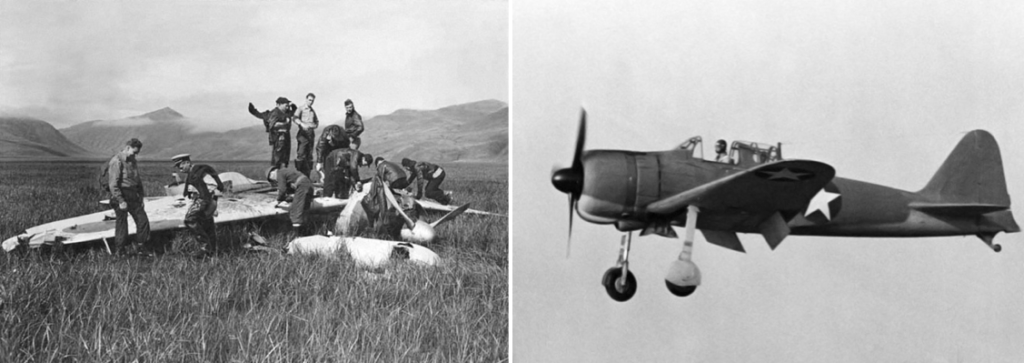
Tests of a Captured A6M2 Model 21
| Altitude | Maximum Speed |
|---|---|
| Sea Level | 270 mph |
| 10,000 ft. | 305 mph |
| 16,000 ft. | 326 mph |
| 25,000 ft. | 315 mph |
Dunn[8] has taken exception to these test numbers. He noted that the Zero was not in optimum condition. He also noted that the Navy’s full Technical Aviation Brief #3, on which the information in the briefer Intelligence Service Report was based, listed different speeds from different tests, with some speeds 7 to 10 mph faster than those shown in Figure 3. (Presumably, some speeds were lower.) He also noted that Technical Air Intelligence Service summaries after Technical Aviation Brief #3 often attributed a higher maximum speed of 328 mph, indicating that this speed came from flight tests. The source of this flight test data was not indicated in these subsequent summaries, but the difference between 326 mph and 328 mph seems to be too small raise concerns.
A number of websites list (without citation) a speed of about 331 or 332 mph for the Model 21. Often this speed is listed at the critical altitude of around 4500 m or 15,000 feet. Three major books on the Zero also list this speed without citation. Mikesh[9] lists the speed of the Zeke 21 as 287 kts (331 mph) on page 97. However, in his detailed description of Zero flight data, he lists and cites the U.S. Intelligence Service data. Jackson[10] also lists the speed of the A6M2 as 534 km/h (332 mph) at 4500 m (14,930 ft) without citation. Gunston’s[11] book provides the only specific information on the source of this speed. It says that the 332 mph speed (534 km/hr) is for the third example of the A6M2 (the one in which the larger engine was introduced). But the book also fails to indicate the source of this statement. It may be that whoever created the uncited 331 mph speed estimate went through the same calculations we did earlier in this paper based on Horikoshi’s book and got the same results.
So far, everything has fallen into the narrow range between 326 mph and 332 mph. However, the last source we have is Saburo Sakai, who was Japan’s top surviving ace. Sakai described his battle with a Hellcat in 1943. [12] This would have taken place in an A6M2 or a slightly faster A6M3. In his book, he reported a normal top speed of only 317 mph (275 kts). This is not surprising, because combat aircraft normally are not as tweaked as test aircraft.
Sakai also noted that the Zero’s engine had an emergency overboost, which got it to 345 mph.[13] In fact, most World War II fighters had emergency overboost that could be used for a few minutes in combat. Normal maximum power was usually called military power, while overboost was often called war emergency power. For example, the P-40E had a rated military power of 1,150 hp at 44.6 inches of supercharger pressure; its war emergency power was 1,490 hp at 56 inches of pressure. Resorting to overboost was an extreme measure because using it for more than a few minutes would destroy the engine, so top speeds are always quoted based on military power.[14]
Overall, then, the top documented speed of the A6M2 Model 21 seems to be about 317 mph to 332 mph at about 16,000 feet, with an overboost speed of about 345 mph. The latter speed, by the way, was the maximum speed on the Zero’s air speed indicator.[15],[16]
As the war progressed, Zeros did not become much faster. According to Horikoshi, the A6M5, the last major variant, was only about 20 mph faster than the original production Zeros. In fact, when the U.S. Navy tested a captured A6M5 Model 52, the latter’s top speed was only 335 mph at 18,000 feet.[17] This was only nine miles per hour faster than Koga’s Zero.
Hirokoshi noted that “Even the best fighters become obsolete within two years during times of war.”[18] He began to design a replacement, the A7M Reppu, in 1940.[19] However, he did not succeed until it was too late to put the new aircraft into production.[20] As he noted, Japan had a shortage of engineering manpower that took Japan twice as much time to design a new airplane or redesign an old airplane.[21]
Comparing the Zero to Allied Fighters in 1942
So the Zero’s maximum speed at the start of the war was about 317 mph to 331 mph, with tests being on the higher side. How fast was this compared to U.S., British, and German aircraft? Figure 4 shows some comparative data for aircraft that would have been in combat in 1942. An attempt was made to use good sources, but the numbers shown are not always reliable. The goal is to give a rough but probably accurate picture of relative speeds. Note that this was two years after the Battle of Britain, so we are not concerned with the earliest models of most European aircraft. This table has several judgment calls. Nevertheless, the pattern is clear.
Aircraft Speeds in 1942
| Aircraft | At Altitude | Altitude | Source |
|---|---|---|---|
| 304 mph | Sea Level | ||
| 326 mph | 4,500 ft | ||
| FW 190 A-3[22] | 315 mph | 8,000 ft | UK Air Technical Section report on a captured aircraft. Air Ministry A.I.2(g) Report No. 2092 |
| 375 mph | 18,000 ft (full blower) | ||
| 351 mph | 25,000 ft (full blower) | ||
| 305 mph | Sea Level | ||
| 326 mph | 4,500 ft | ||
| Bf 109 | 325 mph | 11,000 ft | UK Air Technical Section report on a captured aircraft. Air Ministry A.I.2(g) Report No. 2092 |
| 375 mph | 18,000 ft | ||
| 351 mph | 25,000 ft | ||
| Spitfire V[23] | 375 mph | 20,000 ft | Aeroplane and Armament Experimental Establishment Boscomb Down, April 1941 |
| P-40B/C[24] | 340 mph | Ford, 2007 | |
| P-40E | 355 mph | 15,000 ft | Molesworth, 2008 |
| F4F-3 | 331 mph | 21,000 ft | Board of Inspection and Survey, 1941 |
| A6M2 Zero Model 21 | 317 mph-332 mph | 16,000 ft | This Paper |
| Hawker Hurricane | 303 mph | Aeroplane and Armament Experimental Establishment Boscomb Down, October 1941. | |
| II[25] | 330 mph | 15,000 ft | |
| F4F-4 | 319 mph | 25,000 ft | Board of Inspection and Survey, 1941 |
| Ki.43-1c[26] | 304 mph | 19,400 ft | Buschel, 1995 |
In terms of U.S. aircraft in the Pacific, the Zero was markedly slower than the P-40. However, the P-40 was heavy and only had a single-stage supercharger. This limited to combat below about 16,000 feet. The Zero could fly higher and used this height advantage to dive and gain superior speed. The F4F-3 used at Coral Sea was about the same speed as the Zero, while the F4F-4 used at Midway and later substantially slower.
The table unfortunately only shows speeds at a single altitude or a few altitudes for each plane. When discussing relative speed, it is desirable to do so at many different altitudes for the various aircraft used in the comparisons.
Climbing and Diving
In addition to straight-line speed, pilots want to be able to climb and dive rapidly if there is an attacker moving into position to shoot. Tests of the captured Zero showed that Zero was not impressive in a dive. It could dive about as fast as an F4F Wildcat, but its dive was much slower than other aircraft. [27] Although technical problems prevented the P-40 Warhawk from being tested against the Zero, pilots quickly discovered in early combat that the P-40 could dive much faster than the Zero. In fact, we know that early Zero models had wings that could rip off in overly-rapid dives.[28] Testing also showed that when a Zero dove quickly, its engine would cut out briefly, giving the target a little time to accelerate downward before the Zero began its dive.[29] Also, once into a fast dive, the Zero’s controls became extremely heavy, and there was strong tail buffeting.[30]
Tests of the captured Zero also showed that while the Zero climbed better than U.S. aircraft, its sustained climb rate was not remarkably faster than U.S. aircraft.[31] Although it was much lighter, its engine was also less powerful.
However, the Zero was far better at U.S. aircraft at “zoom,” which is initial climb if the pilot pulls back on the control stick. The Zero could practically stand on its tail in a zoom, and in many cases, it could do a full loop and get on the tail of an attacker. Heavier U.S. aircraft had little if any zoom capability.
Reduced Maneuverability at High Speed
Although the A6M2 Model 21 Zero could fly at 317 mph to 331 mph, it was not very maneuverable at its highest speeds. The Zero’s great maneuverability was due mainly to its low weight and extremely large ailerons. Ailerons roll an aircraft from left to right or right to left. Once the roll is completed, the wings pull the aircraft around in a turn. If an aircraft cannot roll rapidly, its ability to survive in air combat is limited.
The Zero’s ailerons gave great maneuverability at low speeds, but as speed increased, these big ailerons became extremely heavy. The Intelligence Services’ evaluation of the Zero led to the advice that American aircraft should only engage the Zero at speeds above 300 mph. At such high speeds, the Zero’s ability to roll quickly into a turn was
greatly degraded.
In fact, the Zero’s problems with maneuverability did not begin at 300 mph. In October 1944, the U.S. Navy conducted tests of a captured A6M5 Model 52.[32] It found that the ailerons started to become heavy at only 200 kts (180 mph). Yoshimura also reported that the ailerons started to become heavy at 186 mph (300 km/h or 162 kts).[33] By 230 mph (370 km/h or 200 kts), he reported, it was difficult to make a slow roll.[34] Mitsubishi added balance tabs to increase roll rate, but these were later deleted due to
buffeting problems.
REFERENCES
Aeroplane and Armament Experimental Establishment Boscomb Down (April 1941). Spitfire V. X.4922 (Merlin XLV) Brief Performance Trials.
Aeroplane and Armament Experimental Establishment Boscomb Down (October 1941). Hurricane IIB, Z.3564 and IIA (Series 2), Z.2346 (Merlin XX), Performance and Handling Trials.
Board of Inspection and Survey (January 23, 1941). Contract 68219 – Model F4F-3 Airplane – Production Inspection Trials – Final Report on.
This has details on the U.S. Navy inspection report on the F4F-3 Wildcat. The report noted that the Wildcat failed to meet the contractual requirement of 350 mph.
Board of Inspection and Survey (March 24, 1942). Contract 75736 – Model F4F-4 Airplane – Production Inspection Trials – Final Report on.
This has details on the U.S. Navy inspection report on the F4F-4 Wildcat. The report noted that the Wildcat failed to meet the contractual requirement of 328 mph.
Bueschel, Richard M. (1995). Nakajima Ki-43 Hayabusa in Japanese Army Air Force RTAF-CAF-IPSF Service, Schiffer Military/Aviation History: Atglen, Pennsylvania.
Caygill, Peter (2002). Combat Legends: Focke-Wulf FW-190, Airlife: Shrewsbury, England.
Division of Naval Air Station Patuxent River (November, 1944). Combat Evaluation of Zeke 52 with F4U-D, F6F-5, and FM-2, TAIC Report No. 17.
Dunn, Richard L. (2004). Zero Model 21: Unraveling the Performance Data (Part 1), HTTP://WARBIRDFORUM.COM/ZERODUNN.HTM.
This article links to Part 2. This article was not published. It is well-reasoned. However, Dunn argued that because 38 inches of mercury boost was available to pilots, it should not be called overboost. This seems unwarranted. Overboost has to be available to pilots if it is to be used. Similarly, tachometers show a red line speed, but the driver is capable of exceeding the red line RPM.
Ethell, Jeffrey (2003). Warbirds: American Legends of World War II, Lowe & B. Hould: Ann Arbor, Michigan. (First edition published in 1993.)
This book focuses on three aircraft: The P-40 Warhawk, the P-38 lightning, and the P-51 Mustang. The book is rich in small but important details. For example, it notes that the Warhawk’s tight cowling and water piping mad the engine difficult to work on. Mechanics called the engine compartment a hot water toilet.
Ford, Daniel (2007). Flying Tigers: Claire Chennault and his American Volunteers, 1941-1943, Harper Collins/Smithsonian Books: New York. First printed in 1991.
Hiscock, Mervin (2003). Hawker Hurricane: Inside Out, Crowood Press: Wiltshire, England.
Horikoshi, Jiro, Eagles of Mitsubishi: The Story of the Zero Fighter, University of Washington Press: Seattle, Washington, 1981. Translated by Shojiro Shindo and Harold N. Wantiez. First published in 1970 by Kappa Books: Tokyo.
This is the definitive source on the Zero airframe’s development, as told by its designer. However, if you are looking for information about the Zero’s engine, weapons, and other non-airframe matters, you will have to look elsewhere.
Intelligence Service, U. S. Army Air Forces, Information Intelligence Summary, No. 85, Flight Characteristics of the Japanese Zero, December 1942.
This is the report on tests done on Koga’s captured Model 21 Zero.
Jackson, Robert (2005). Mitsubishi Zero: Combat Legend, The Crowood Press: London.
This book is full of good information. It contains detailed notes from the Intelligence Service report on tests conducted with the Koga Zero.
Mikesh, Robert C. (1994). Zero: Combat and Development History of Japan’s legendary Mitsubishi A6M Zero Fighter, MBI Publishing: Osceola, Wisconsin.
This is the best book on the Zero I have seen. It has solid information and a lot of it.
Molesworth, Carl (2008). P-40 Warhawk vs Ki-43 Oscar, Osprey: Botley, Oxford, UK.
This is my source of speed data for the P-40 Warhawk. Data for the speeds of different versions of the Warhawk is difficult to obtain, and I have not found any definitive sources.
Molesworth, Carl (2003). P-40 Warhawk Aces of the Pacific, Osprey Aircraft of the Aces, No. 55, Osprey: Botley, Oxford, UK.
Nijboer, Donald (2009). Seafire vs A6M Zero: Pacific Theater, Osprey: Botley, Oxford, UK.
Very few Seafires (navalized versions of the Spitfire) fought Zeros. However, this book has a great discussion of tests done on captured A6M5 Model 52s.
Sakai, Saburo; Caiden, Martin; and Saito, Fred (2001). Samurai!, ibooks: New York. (Originally published in 1957.)
Sakai was Japan’s top surviving ace. He discusses the Zero—especially early models—from the viewpoint of the pilot. This is a great complement to Horikoshi’s book. It is also a good read.
Whitney, Daniel D. (1998). Vee’s for Victory! The Story of the Allison V-1710 Aircraft Engine 1929–1948, Shiffer Military History: Atglen, Pennsylvania.
Yoshimura, Akira, Zero Fighter, Praeger: Westport, Connecticut, 1996. Translated by Retsu Kaiho and Michael Gregson.
This is book with written with great amount of Japanese national pride about the Zero and other aspects of World War II. Having good access to Japanese sources, this book contains a fair amount of information about the Zero available in no other books.
Acknowledgement
Several of the flight test reports were found at the World War II Performance website, http://www.wwiiaircraftperformance.org. This extremely valuable site is maintained by Mike Williams and Neil Stirling.
